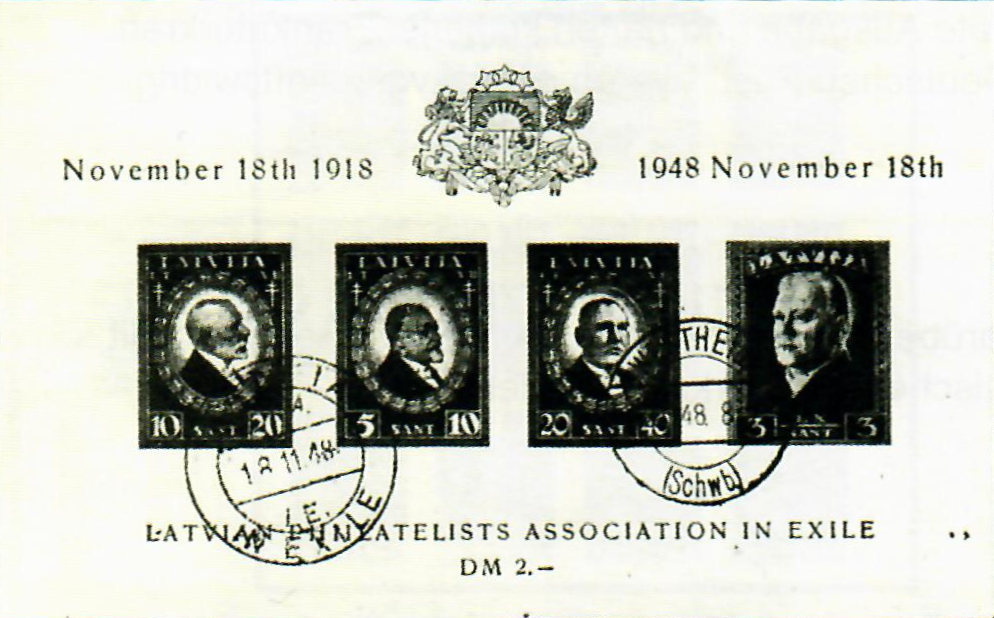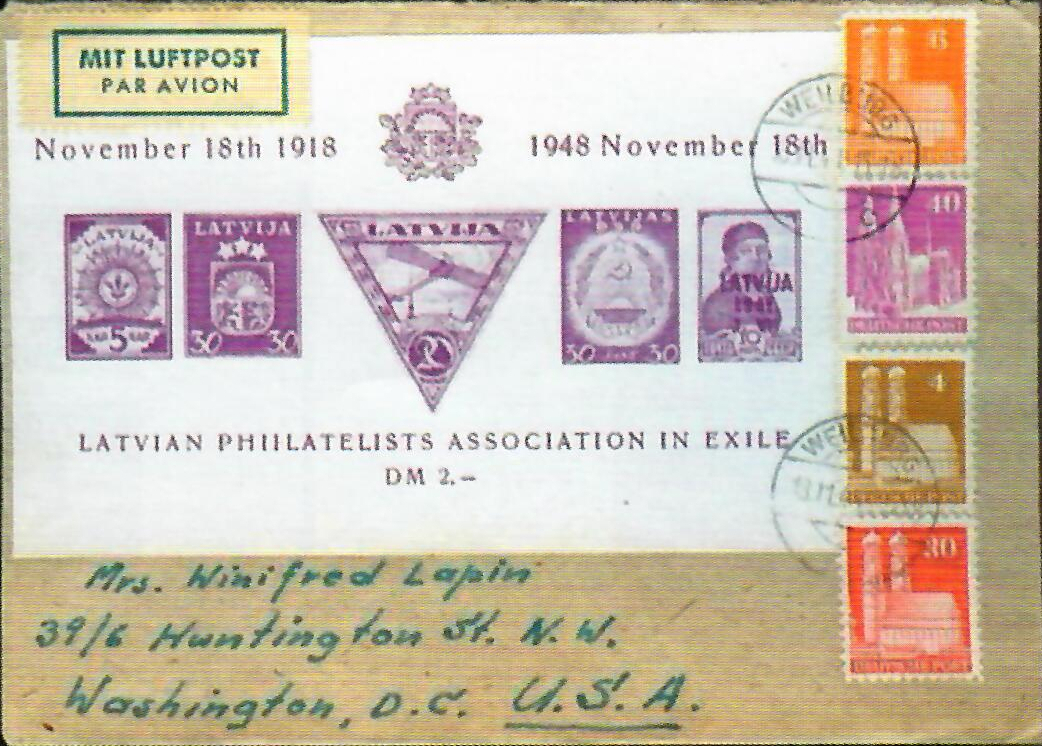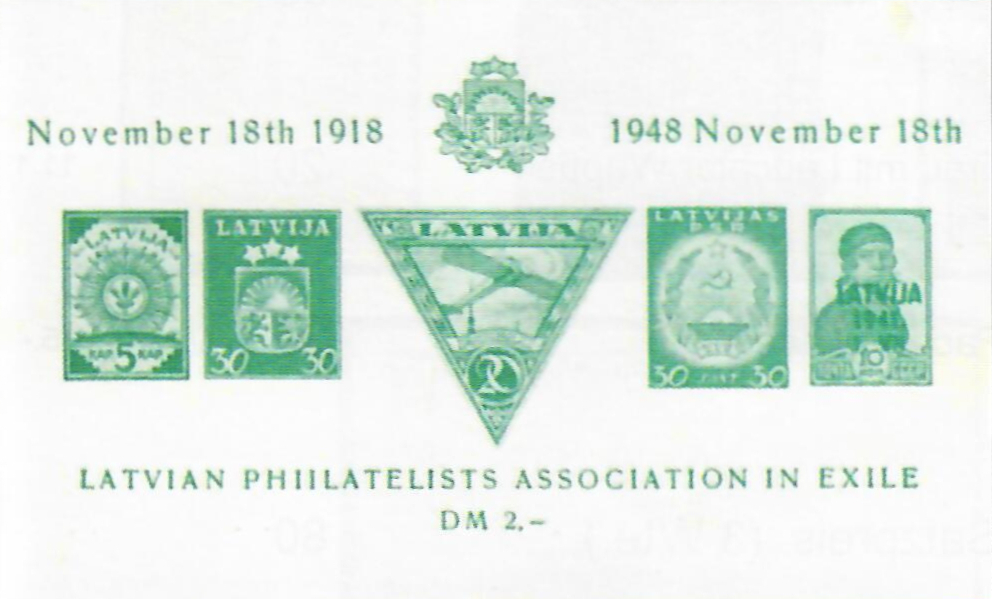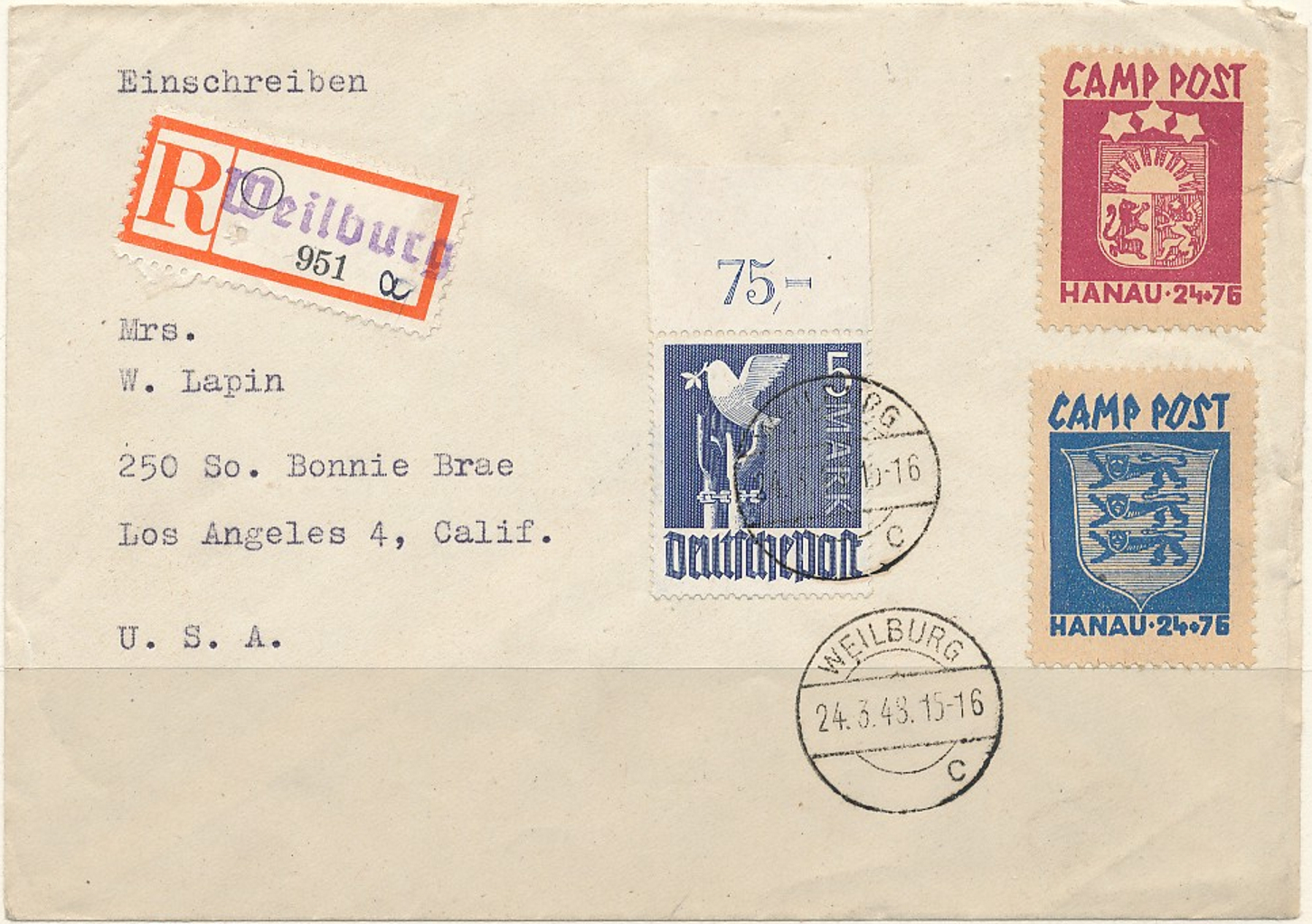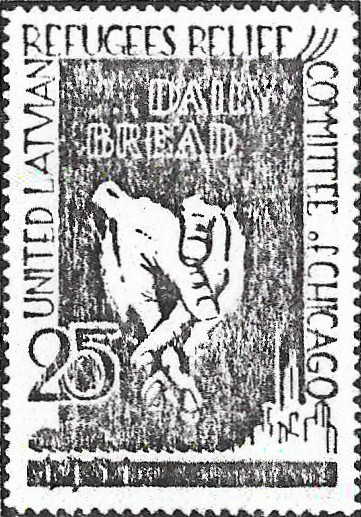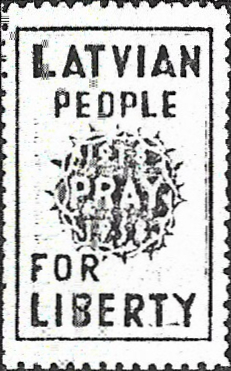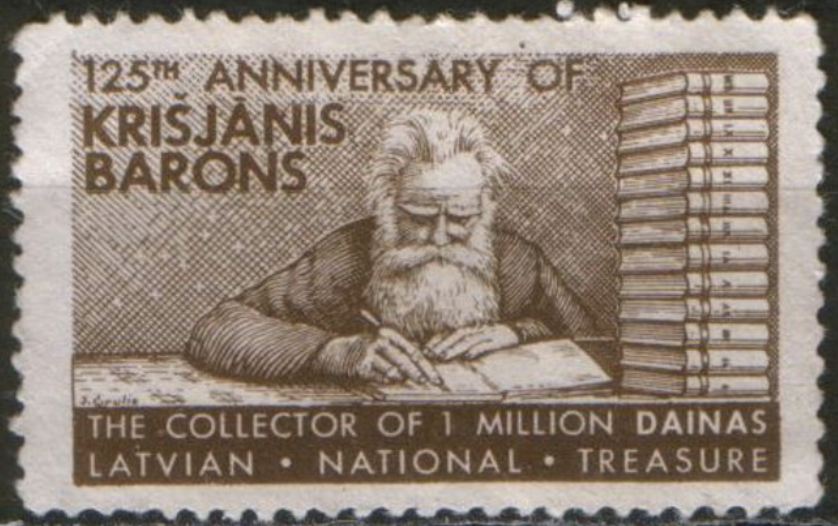Latvia
-
Courland, Semigallia, Latgale
-
Royal Swedish Post
-
Imperial Russian Post
-
German Occupation / Ob. Ost
-
Independent Republic of Latvia
-
Soviet Occupation
-
German Occupation / Ostland / Courland
-
Camp Mail / Latvians in Exile
For general information on DP camps, mail from camp inmates to other camps, at home and abroad, and the issue of camp postage stamps, see Camp Mail / Estonians in Exile on this web.
Latvian DP camps
In the period between 1945 and 1951, the largest refugee camps/centres with Latvian residents in Germany were Esslingen, Würzburg, Nürnberg and Lübeck with 2,500–5,500 inhabitants and with 1,000–2,500 inhabitants Amberg, Geesthacht, Augsburg, Fischbach, Mannheim, Eichstätt, Hanau, Flensburg, Alt Garge, Meerbeck, Ravensburg, Husum, Schleswig, Ansbach, Greven, Hersbruck, Karlsruhe, Kleinkötz, München, Oldenburg, Regensburg, Spakenberg and Weiden.
Latvian Camp Post Stamps
There are hardly any purely Latvian camp stamps, since the camps in which Latvian citizens were housed and which also issued camp stamps, also had philatelists from Estonia and / or Lithuania and mostly issued "Baltic" stamps together.
In the DP camp Hanau, however, two commemorative sheets were issued by the Latvian Philatelic Association in Exile on the occasion of the 30th anniversary of independence on 18.11.1918, showing the history of Latvia on stamps and the 4 Latvian presidents. These sheets are often found on letters from Weilburg to Canada. (Illustration: Wilhelm catalogue)
Latvians in exile
The first important emigration invitation for the refugees in Germany came from Great Britain. Following the offer of the British Ministry of Labour, about 900 Latvian women left in 1946 and 1947 to work in tuberculosis sanatoria in that country. In early 1947, an agreement was reached between the American occupation authorities and the Belgian government for the employment of 20,000 displaced persons (mainly men from the Baltic countries) in Belgian coal mines. About 1,000 Latvians, mainly former soldiers, went to Belgium as part of this campaign, which was called "The Black Diamond". About 16,000 Latvians were recruited to work in Britain in 1947 and about a thousand to work in Canada.
Mass emigration began during the IRO period in 1948. In October 1948, an agreement was reached between the IRO and the Australian government for the resettlement of 100,000 refugees to Australia. Individual immigration was encouraged by the government of Canada and the United States also issued a decree in 1948 to accept refugees into the United States. Immigration was based on guarantees by US citizens that the immigrant refugee would be provided with housing and employment and that this refugee would not be a burden on the society of the United States. Obtaining these guarantees was extremely difficult for the refugees and only in the second half of 1949 did the Latvian emigration flow accelerate. By the end of 1951, nearly 87,000 Latvian citizens had emigrated, most of them to the United States (about 38,000), Australia (about 20,000), Great Britain (about 14,000) and Canada (about 9,000).
Due to the intensive emigration, the work of the refugee organisations and cultural institutions quickly came to an end. The Central Council of Latvia was effectively dissolved in November 1950 and replaced in 1951 by the Central Council of Latvians in Germany. On January 1, 1952, there were still about 16,000 Latvians in Germany (source: www.archiv.org.lv/baltic_dp_germany).
From 1957 to 2005, the Latvian-language journal KRĀJĒJS (Collector) was published in Ontario / Canada, and the journal KOLLEKCIONĀRS was published in the USA.
Vignette issues (cinderellas)
There are – in addition to a wide range of scouting issues – various private Latvian vignette issues from the 1950s and later, mostly with charitable, cultural or political aims. A small selection:
1958: Latvian Press Association, to remind the world of the tyranny of the Soviet Union and Latvia's 40th birthday (brown)
All b/w illustrations and further information in: Zichmanis, M. 1979: Latvian Non-Postal Exile Stamps 1947–1978. Ed. Latvian Philatelic Society. Toronto. (Available antiquarian from Philabooks.)
-
Independent Republic of Latvia (restored)
-
Private Mail in Latvia


